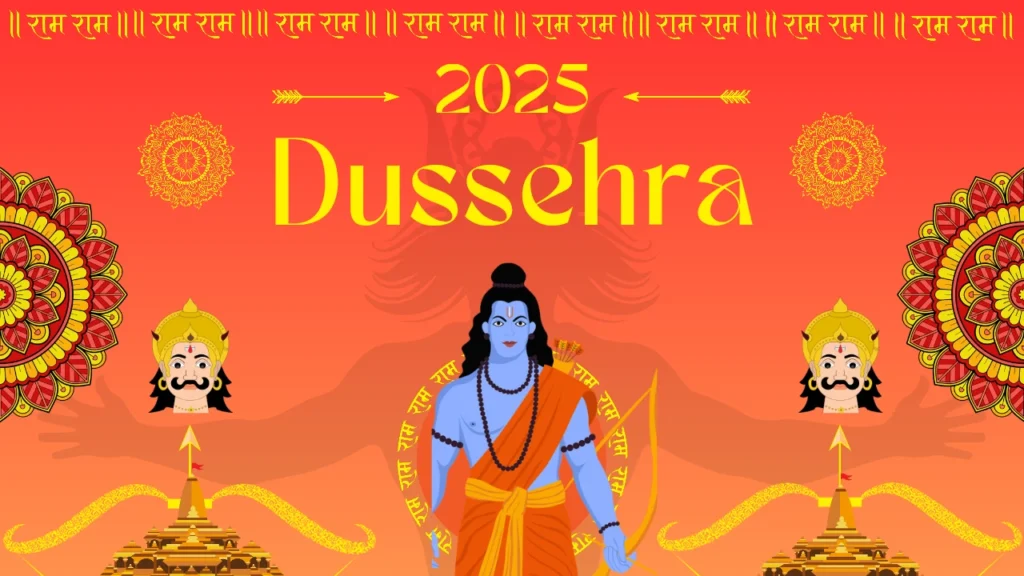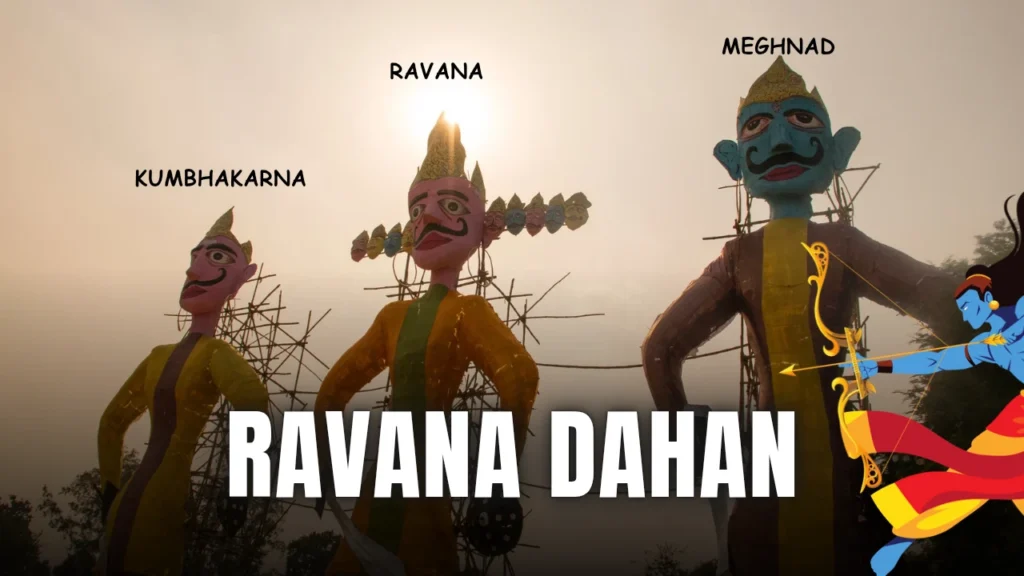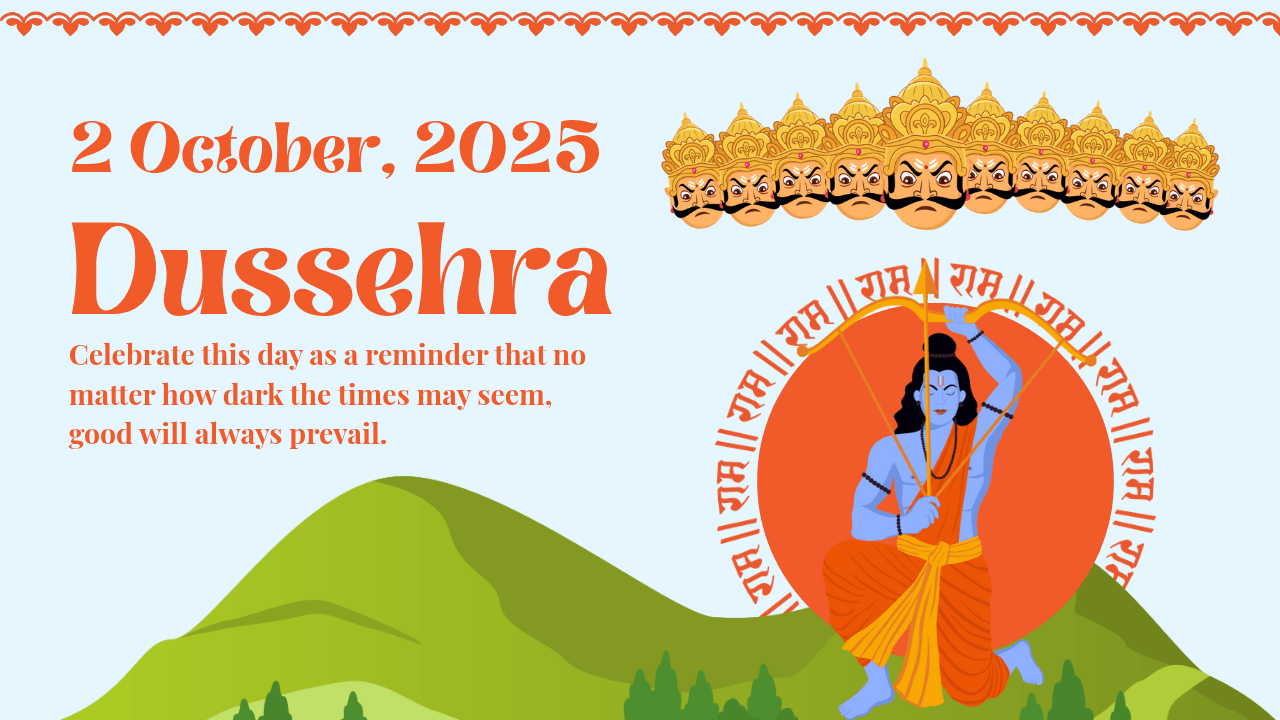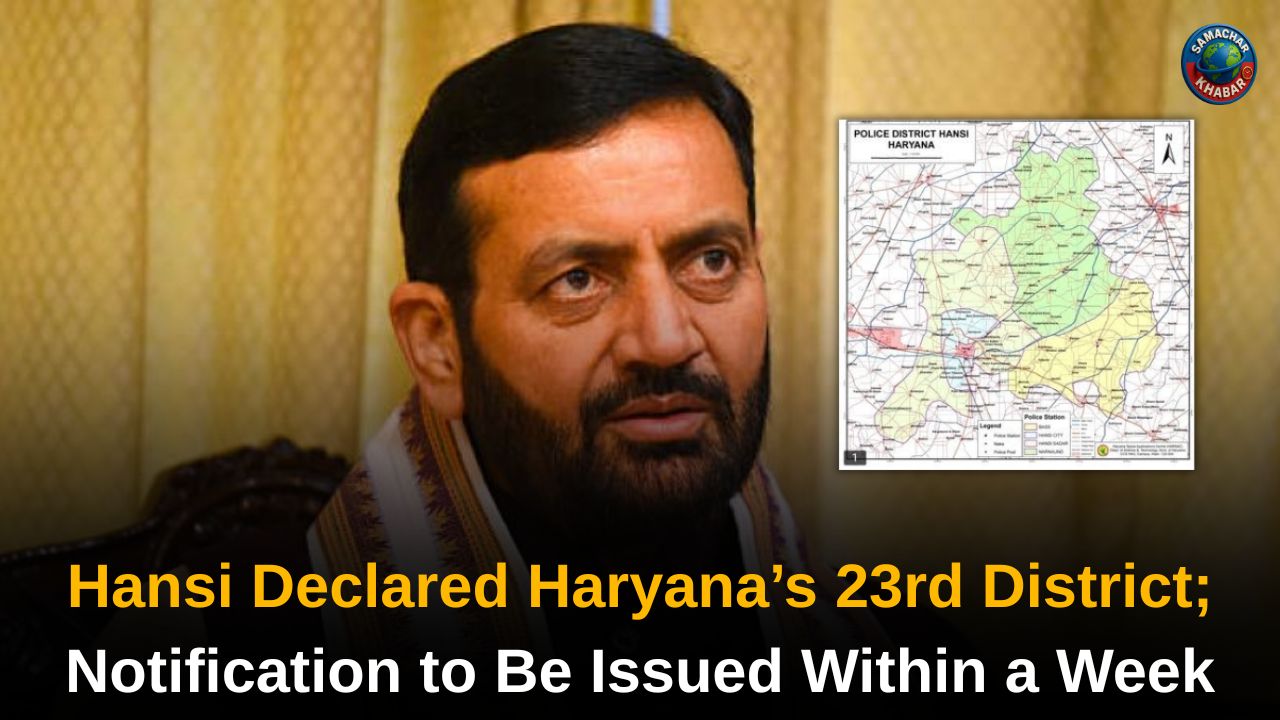The calendar for 2025 holds a remarkable date: 2 October. While this day is historically reserved for commemorating the values of Mahatma Gandhi, this year, it offers an extraordinary convergence as it also marks the auspicious festival of Dussehra 2025 (also known as Vijayadashami).
This rare alignment of a national observance and a major Hindu festival creates a powerful cultural and spiritual focal point, urging us all to reflect on the dual triumph of truth—the victory of Lord Rama over Ravana, and the victory of non-violence over oppression.
This blog post will delve deep into the core significance of Dussehra 2025, exploring the legends that define it, the diverse ways it is celebrated across India, and how its timeless message of good over evil remains profoundly relevant in our modern lives. Get ready to uncover the rituals, the spectacle, and the spiritual power that makes this festival a true beacon of hope and righteousness.
The Twin Legends Behind Vijayadashami
The festival of Dussehra is the grand finale of the Navratri period, signifying the victory of Dharma (righteousness) over Adharma (unrighteousness). This triumph is celebrated through two main, powerful mythological narratives.
Lord Rama’s Victory Over Ravana
The most widely known tale is drawn from the epic Ramayana. After a fierce and long battle, Lord Rama, with the help of his brother Lakshmana and the Vanar Sena (monkey army), defeated the ten-headed demon king of Lanka, Ravana, who had abducted his wife, Sita. The ten heads of Ravana symbolically represent the ten evils of human nature: Kama (lust), Krodha (anger), Moha (attachment), Lobh (greed), Mada (pride), Matsarya (jealousy), Buddhi (intellect, when misused), Mana (mind, when negative), Ahamkara (ego), and Anyaaya (injustice).
Also Read: India’s Richest Gurus: From Crores to Thousands of Crores – But Who Holds True Spiritual Wealth?
The evening of Dussehra 2025 will culminate with Ravan Dahan—the dramatic burning of giant effigies of Ravana, his brother Kumbhakarna, and his son Meghnad. This spectacle is more than just a performance; it is a ritualistic act of burning the inner demons within ourselves, a promise to overcome our own ten failings and walk the path of virtue.
Goddess Durga’s Defeat of Mahishasura
In the eastern and north-eastern parts of India, particularly West Bengal, the tenth day marks the culmination of Durga Puja. This is the day Goddess Durga vanquished the buffalo demon Mahishasura, who had grown so powerful he threatened the balance of the universe.
- The Ritual: The celebration on 2 October will see the grand Visarjan (immersion) of the Durga idols. The goddess, who spent the preceding nine days protecting her devotees, symbolically returns to her husband, Lord Shiva, in the heavens. This deeply emotional farewell, accompanied by the iconic dhak drums and Sindoor Khela (smearing of vermillion), signifies a powerful message of feminine strength and protection.
Celebrating Dussehra 2025: A Kaleidoscope of Traditions

The beauty of Dussehra lies in its vibrant, regional diversity. While the core message remains the same, the celebrations transform from state to state, making it a truly pan-Indian festival.
- North India (Delhi, UP, Punjab): The days leading up to 2 October are dominated by Ramlila, a dramatic folk re-enactment of the Ramayana. Grand fairs are organized, and the air is filled with anticipation for the towering effigies of Ravana to be set alight at sunset.
- Mysore (Karnataka): The Mysore Dasara is globally famous. For ten days, the city palace is illuminated, and the festival culminates on Vijayadashami with a spectacular royal procession (Jumbo Savari) featuring caparisoned elephants carrying the idol of Goddess Chamundeshwari (a form of Durga). This royal patronage is a beautiful real example of how tradition is preserved for centuries.
- Maharashtra and Karnataka: The day is considered Shubh (auspicious) for new beginnings. People perform Ayudha Puja—worshipping their tools, weapons, books, and vehicles. The belief is that the instruments of one’s livelihood are instrumental to their success and must be honoured.
The Spiritual and Modern Significance of 2 October
The coincidence of Dussehra 2025 and Gandhi Jayanti on 2 October adds a profound layer of meaning. Both days champion the same ultimate principle: the supremacy of good.
| Dussehra/Vijayadashami | Gandhi Jayanti |
|---|---|
| Triumph of Rama (Good) over Ravana (Evil) | Triumph of Non-Violence (Good) over Oppression (Evil) |
| Focus: Spiritual cleansing and destruction of inner demons. | Focus: Moral cleansing, national unity, and truth (Satyagraha). |
The combined observance on 2 October offers a rare chance for spiritual and civic introspection. It’s a time to ask: Have I defeated my inner Ravana of ego and anger? And am I living up to the Gandhian ideals of truth and simplicity?
- The Power of New Beginnings: Statistically, Vijayadashami is considered one of the three and a half most auspicious days in the Hindu calendar. The belief is that any new venture started on this day is destined for success. Whether it’s launching a business, signing a contract, or even starting a new diet, Dussehra 2025 offers the ultimate launchpad.
Making Dussehra 2025 Personally Meaningful
Celebrating the festival doesn’t have to be limited to public events. Here are actionable ideas for an enriching personal celebration:

- Read and Reflect: Spend time reading about the Ramayana or the stories of Durga. Reflection is the highest form of celebration.
Dussehra 2025 on 2 October is more than a holiday; it is an annual reset button for the soul. It is a powerful reminder that every ending gives way to a triumphant beginning. As the effigies burn and the idols are immersed, the timeless message rings clear: truth and goodness always win.
FAQs on Dussehra 2025
Q1: Is Dussehra 2025 on 1 October or 2 October?
Dussehra 2025 will be celebrated on Thursday, 2 October 2025. While the Dashami Tithi (tenth lunar day) begins on the evening of 1 October, the entire festival is observed on 2 October, as the majority of the auspicious time (Vijay Muhurat) falls on this day.
Q2: Why is the combination of Dussehra and Gandhi Jayanti on 2 October 2025 considered rare?
Gandhi Jayanti is a fixed date (2 October) on the Gregorian calendar. Dussehra is based on the Hindu lunisolar calendar and thus shifts every year. The two coinciding is a rare occurrence that last happened in 2006, symbolizing a dual victory of goodness: moral (Gandhi) and mythological (Rama/Durga).
Q3: What is the Vijay Muhurat on Dussehra 2025 and why is it important?
The Vijay Muhurat is the most auspicious time on Vijayadashami. For Dussehra 2025, it will be in the afternoon. It is believed that any venture—from starting a journey to launching a new business—undertaken during this specific time will lead to guaranteed success and overcome obstacles.
Q4: What is the main difference between Dussehra and Durga Puja’s Vijayadashami?
Both celebrate the victory of good over evil. Dussehra in North and West India primarily celebrates Lord Rama’s victory over Ravana with Ravan Dahan. In East India (Durga Puja), Vijayadashami marks Goddess Durga’s defeat of Mahishasura and the Visarjan (immersion) of her idol.
Q5: Is Dussehra considered an auspicious day for investments and new purchases?
Yes. As the day symbolizes triumph and new beginnings, Dussehra is considered one of the best days in the Hindu calendar (Saade Teen Muhurtas) for starting new investments, purchasing property, buying vehicles, and launching any new professional endeavour.

















